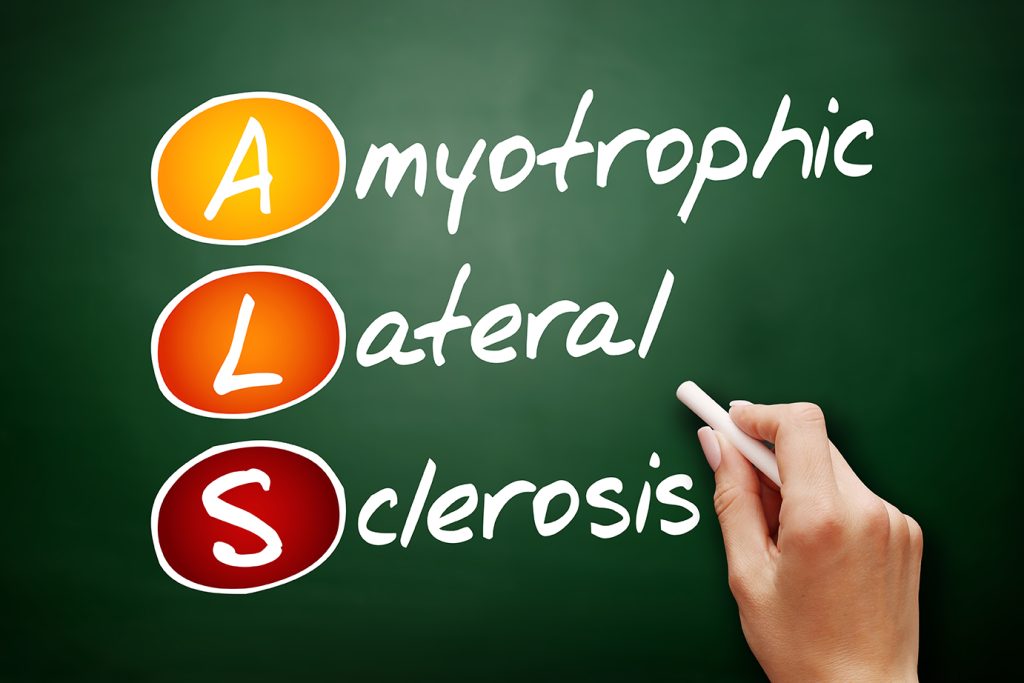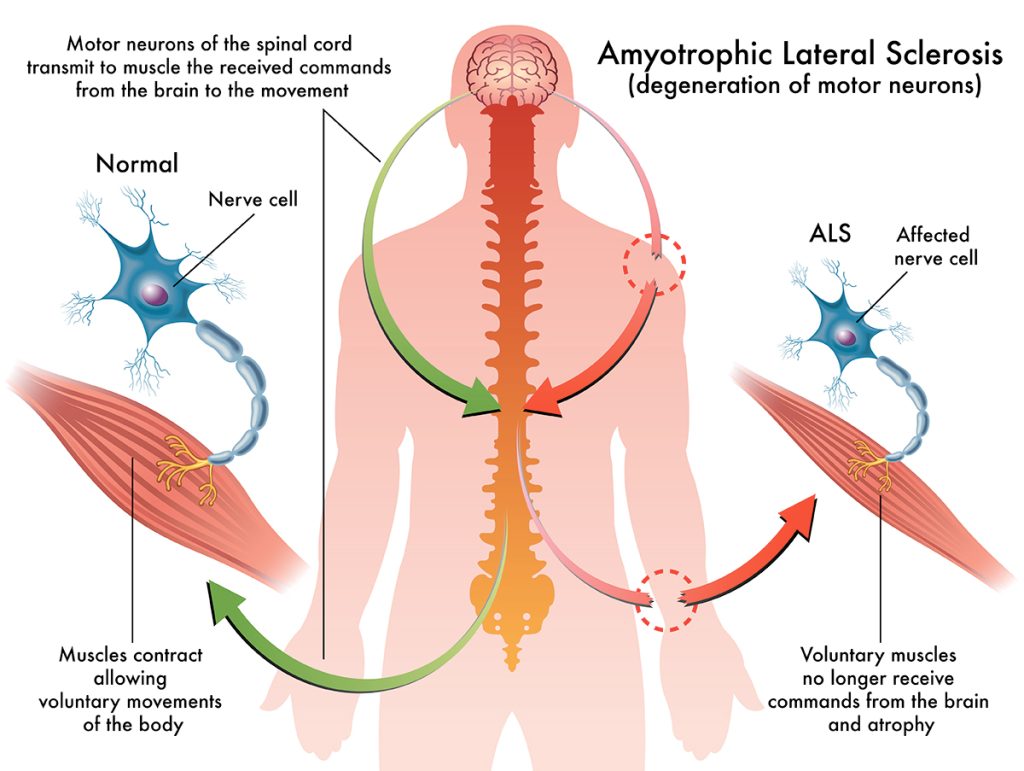
Motor neuron disease (MND), Amyotrophic lateral sclerosis (ALS), also called Lou Gehrig’s disease, causes the death of the neurons that control the muscle’s voluntary functioning. Lou Gehrig was a famous baseball player who was diagnosed with ALS. Overtime, the nerve cells progressively break down and die. At first onset, muscle twitching might start to occur coupled with weakness in the limbs, and slurred speech. Eventually, a person will no longer be able to control their ability to move, speak, breathe, or eat. This disease is fatal and there is currently no cure.
This condition starts to affect the hands and feet first. It will soon spread to other parts of the body, taking over almost everywhere possible. Once full-fledged a person isn’t even able to chew their own food. The only function you can still control is the use of the bathroom. Other side effects include tripping and falling, difficulty holding the head up and keeping good posture. The muscles in the legs become stiff and twitch. There is an overall feeling of fatigue all the time. A person’s senses are no longer the same (hearing, vision, touch). ALS victims also have a hard time controlling their emotions.

Once a person is unable to control their breathing, a breathing device similar to those used for sleep apnea may need to be used. Some people opt for surgery, having their tracheostomy surgically reformatted so that there is a whole in the neck leading to the windpipe (trachea). Different communication devices and technologies may need to be used once communication becomes too difficult. Many persons with ALS also develop dementia and are unable to remember or make decisions. When eating becomes too difficult, a feeding tube might need to be inserted. Otherwise, malnutrition and dehydration can occur.
Exercise can be utilized to help reduce pain in joints and to help prevent loss of motion. The aim of exercise is to improve muscle functioning, build and maintain strength and endurance, and to even improve mood in order to offset symptoms of depression. As ALS progresses, muscle weakness will continue to take place. There is no way to know what effect this will have on a person with ALS, so the more proactive measures taken, the better. Stretching is a great way to help cramping which commonly happens to the muscles. Going through a series of stretches can also help reduce joint pat pain and improve range of motion. Aerobic training is also beneficial to improve lung capacity and efficiency.
However, strength training is not recommended because the muscles are weakening, and it is putting the person as risk for injury since the body isn’t communicating what limits should be in accordance with the muscle weaking over time. Strength training isn’t going to prevent what is going to take place. Walking, swimming, or biking would be better forms of movement. Exercise has the “feel good” effect regardless of any physical benefit, so this is important to remind clients with ALS about when they may feel exercise is “pointless” with their condition.
There is no known cause for ALS, but it is an inherited disease in 5 out of 10 cases. Researchers are trying to discover if there are any possible gene mutations, chemical imbalances, immune responses, or mishandled proteins, that could cause the disease. Some evidence suggests that exposure to environmental toxins might be linked to ALS. In persons with ALS, their children have a 50-50 chance of developing the disease. It is most common in ages 40 to 60.
This disease is greatly feared. Eventually the spine and brain degenerate, and quality of life is greatly affected. ALS has been found to cause death within 3 to 5 years of diagnosis. The inability to control your own body is frustrating and disruptive to daily life. As such, research is being performed to discover the cause and to work toward treatment methods for recovery.
Dr. Megan Johnson McCullough, owner of Every BODY’s Fit in Oceanside CA, is a NASM Master Trainer, AFAA group exercise instructor, and specializes in Fitness Nutrition, Weight Management, Senior Fitness, Corrective Exercise, and Drug and Alcohol Recovery. She’s also a Wellness Coach, holds an M.A. Physical Education & Health and a Ph.D in Health and Human Performance. She is a professional natural bodybuilder, fitness model, and published author.
References
- https://www.ncbi.nlm.nih.gov/pmc/articles/PMC4653353/
- https://www.nejm.org/doi/full/10.1056/NEJM200105313442207
- https://medlineplus.gov/amyotrophiclateralsclerosis.html
- https://www.healthline.com/health/amyotrophic-lateral-sclerosis
